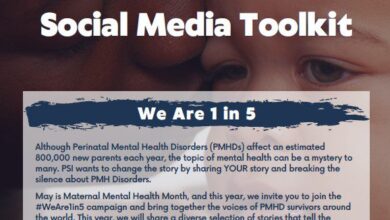How to Incorporate Fitness for Postpartum Recovery

Getting back into fitness after birth doesn’t have to happen right away, but it has benefits to recovery and your overall postpartum wellness.
Congratulations, Mom! You’ve accomplished the biggest athletic event of your life: the birth of your precious baby. Whether by vaginal delivery or C-section, labor and delivery require body to endure more than before.
You may feel good for the first few weeks after birth, and you may feel like getting back into exercise. How fast is too fast?
As a Nutrition and Strength Coach and new mom myself, this is a question for me as I near the birth of my son. I want to plan my routine and know what I can and cannot do in the first few weeks after giving birth.
It’s not guaranteed how you’ll feel after giving birth in those first few weeks, so making an actual plan isn’t really in the cards for me, and it’s not for most of my clients either. However, some things can be helpful to understand about the first few weeks after giving birth help get back to fitness after birth.
What happens to your body after birth?
Before we dive deeper into the role of fitness in your postpartum journey, it’s important to understand and appreciate what happens to your body after giving birth.
In the first week after birth, the bleeding is still quite heavy as your body heals from childbirth and the wound your placenta leaves behind as it separates from your uterus.
Your pelvis and tailbone shift back in their normal pre-pregnancy resting positions, and your the uterus begins to contract return to its pre-pregnancy size.
Up until about six to eight weeks, your uterus continues to shrink back to its normal size as it heals from the wound your placenta leaves as it separates. Up to this point, rest is your best friend.
We are usually cleared for sex and exercise at our six-week check-up. However, that it does not mean that our body is ready to return to our pre-pregnancy fitness routine. The good news is there is there’s a lot you can do in the first few weeks postpartum to set you up for a smoother transition to Fitness when you’re ready.
Fitness-oriented movements you can do immediately after giving birth
As the baby grows, our uterus displaces other organs to make room during pregnancy. This puts pressure (as I’m sure you’ve noticed) on your organs- especially your lungs. Not fully expanded, your lungs can’t take full, deep belly breaths.
When the baby joins you on Earthside, you can start programming your body again prioritize your diaphragmatic breath.
These deep belly breathing can and should be your focus in the first three to four weeks after giving birth, because everything else in your body is changing.
- First week: practice while lying down
- Second week: practice while sitting
- Third Week: practice while standing, leaning against a wall
- Fourth Week: exercise while walking lightly

Diaphragmatic breaths can help guide your organs back in their usual resting places, manage your stress levels, and promote muscle tone in your core.
As you focus on these deep belly breaths, you can begin lying on your back with your knees bent. After the first week, you can progress to sitting for your breaths. In the third week, you can stand on your back, leaning against the wall.
In your fourth week, you can progress to using your diaphragmatic breath in movements like light walking.
While it may not seem like much, developing your diaphragmatic breath at the front end of your postpartum recovery can help you get back to fitness faster than if you jump right into it.
Jumping without giving your body time to heal can lead to pelvic floor issues such as incontinence, pelvic organ prolapseor problems with subsequent pregnancies.
How to do diaphragmatic breathing
“How do you do diaphragmatic breathing,” you may ask. Here is one video from my friends at BIRTHFIT explaining the diaphragmatic breath for you to use at home.
Other articles that may help you
Hello Postpartum participates in the Amazon Services LLC Associates Programan affiliate advertising program designed to provide a way for sites to earn advertising fees by advertising and linking to Amazon.com.






